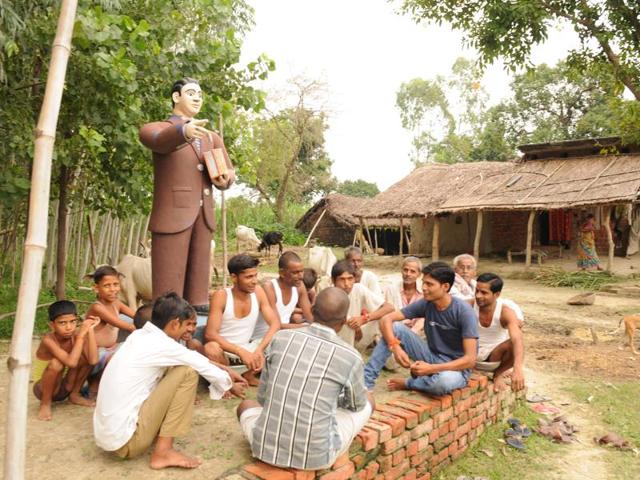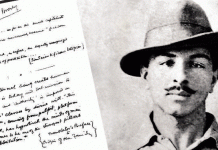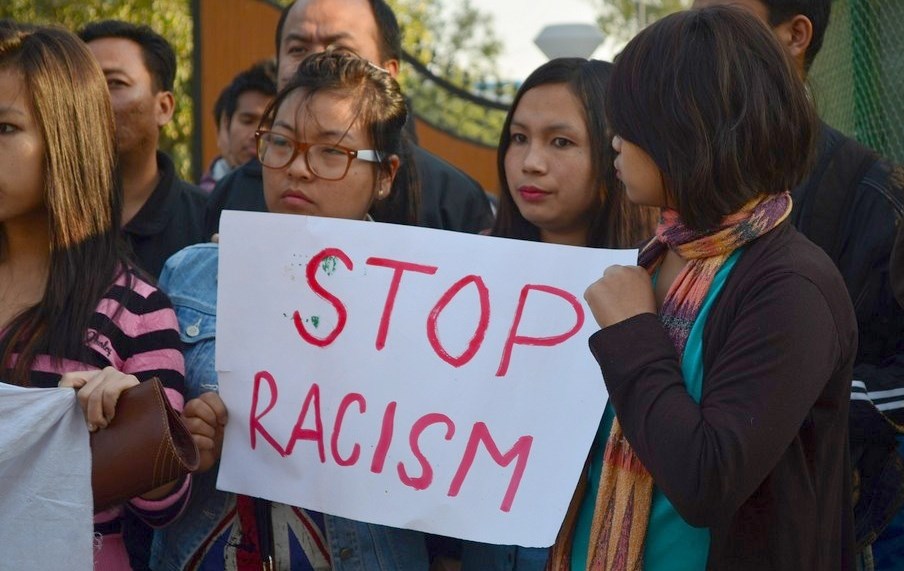Caste as a social institution has continued to marginalise and oppress certain sections of the society and this has meant that there have been perpetual hindrances to inclusive growth in the country. It is time we revisit this age old institution with not only renewed criticality but also empathetic understanding and the ethic of care.
Nivedita Dwivedi is working in the field of education. She has completed MA in Elementary Education from Tata Institute of Social Sciences, Mumbai.
I was born in a relatively upper-middle class Brahmin Hindu family. I mostly stayed in urban areas and studied in convent or high-profile public schools. My parents are well-educated (both post-graduates) and I was always well-provided for.
My earlier understanding of the phenomenon of ‘caste’ in India was mostly influenced by this background and socio-economic status I was born with. Since the time I had some understanding of this phenomenon, I thought of it as a societal structure that has existed in the Indian society since ages. Although, I did-not endorse it and was superficially aware of it being an unjust system, as it ascribed a social status to an individual solely on the basis of birth, I never really dwelt very deeply on it, as I never had any first-hand encounter with its actual functioning in the society. Through my interactions with my family, and the members of the society I moved in, I was always led to believe that caste inequality was a phenomenon of the past, and the reservation policy had actually been instrumental in a reversing of the inequality, with Brahmins and other higher castes being in a vulnerable position today and the lower castes reaping all the benefits. It was always portrayed as a battle of ‘meritocracy’ vs. ‘reservations’, where, due to vote-bank politics, ‘reservations’ were winning hands down with a severe blow to the principle of ‘meritocracy’.

Another distinguishing memory that I have of ‘caste’ is the injunction that was placed on me by my family that I was allowed to marry anyone that I liked with only two exceptions; the boy I chose should neither be from a ‘low’ caste, (especially should not be outside the so-called ‘twice-born’ castes), nor a non-Hindu. Other than this prohibition on marriage, I never observed anyone in my family practicing any other type of caste discrimination with anyone in the society, but my marriage into a ‘low’ caste was out of question.
My family always valued education and encouraged me to read, but another thing that now strikes me is that though I was encouraged to read Mahatma Gandhi, Swami Vivekananda and the likes, I was never introduced to the writings of Ambedkar, or Jyotiba Phule or the others. I only knew Dr. Ambedkar as the person who drafted the Indian Constitution, and left with us a legacy of the ‘reservation system’, that penalized ‘merit’ and ‘rewarded’ mediocrity. Although, in my personal life, I never suffered any ‘discrimination’ because of the ‘evil of reservation’, I still came to believe that it was a profoundly unjust way of addressing the ‘caste’ issue and was completely against the principle of ‘merit’. My views completely coincided with the views of Mr. N.R Narayan Murthy, the former Chairman of Infosys, when he says, “I firmly believe that there is considerable social injustice in the country and that we have to help the disadvantaged people overcome this. The solution is not reservations in education or in employment. The solution is to make the disadvantaged people more competition worthy than they are today” (Upadhaya, 2007).
I have written all of the above in the ‘past’ tense, as studying Sociology, although to a limited extent, has brought about a significant change in my thoughts on the issue of ‘caste’. As a sociological concept, I have been able to discern a few major characteristics of ‘caste’ as it prevails in India. These (may not be exhaustive) are:
- The closed nature of the system, with concrete boundaries and negligible mobility
- The concept of ‘purity’ and ‘pollution’ associated with it
- A hierarchical system
- An ‘ascriptive’ system (based on birth)
- Ritual authority
- Preserved through the rules of ‘endogamy’
I am most inclined and convinced with the arguments put forward by Dr. Ambedkar, on the genesis and mechanism of caste. According to him,‘caste in India means an artificial chopping off of the population into fixed and definite units, each one prevented from fusing into another through the custom of endogamy. Thus the conclusion is inevitable that endogamy is the only characteristic that is peculiar to caste’ (Ambedkar, 2002). The caste system is maintained and perpetuated by the system of ‘endogamy’, i.e., marriage within the same caste. As Dr. Ambedkar highlights, endogamy is used in combination with exogamy, with the result that an individual shall marry within the same caste but outside one’s ‘gotra’ (Ambedkar, 2002). The castes, thus, maintain their exclusivity with strict implementation of these rules of marriage and any deviation to these rules is seen as a threat to the ‘social order’ that these rules seek to maintain. According to me, this exclusivity is especially and strictly sought to be maintained in case of the distinction between ‘higher twice-born’ castes and the ‘lower Shudra’ castes. My personal experience also corroborates this view, where there were strict restrictions on my marriage outside the ‘twice-born’ castes.
After independence, discrimination on the basis of caste has been constitutionally prohibited. Untouchability has been outlawed. However, these measures have not succeeded in rooting out this evil from the hearts and minds of the people. Though there are no overt restrictions on people on the basis of their castes, yet this system of inherent inequality thrives on. The justification many a times given by the ‘higher’ castes is that this system is only based on ‘mutual interdependence’ and ‘difference’ rather than on ‘inequality’. However, this is a pretty precarious position to take as ‘in actual practice, there is a profound inequality between the castes in terms of productive resources, social status and access to knowledge’ (Chakravarti, 2006).
The debates around reservations are an apt example to prove this point. In common sense parlance, any reservation policy enacted to benefit the lower castes is pitted against its adverse effects on ‘meritocracy’. However, there are certain inherent flaws in this argument. An article I read, by V. Sanil, very deftly challenges the ‘myth of merit’ (Sanil). Any conception of ‘merit’ can be justified and worthy only if it meets certain prerequisite conditions, those of equal opportunity and equal playing field for all. Even here, the challenge is to address the differences in the socio-economic-cultural status of individuals that prevail in the society. Any notion of ‘equality of opportunity’ is a farce until and unless it also addresses the differences in ‘cultural capital’ between individuals. For example, the IT industry prides itself on being caste neutral and based solely on the principle of merit. However, as stated by Carol Upadhaya, ‘Data from our study and several others suggest that most software engineers come from middle class, educated families. Taking parents’ education and occupation as a proxy for socioeconomic class (in the absence of reliable income data), our survey of software professionals in Bangalore found that 80 per cent of their fathers had graduate degrees or above, while only three respondents (out of 132) had fathers with less than SSLC level education. In addition, 56 per cent of respondents’ mothers were graduates or above. Another survey of 102 software engineers in Bangalore yielded similar findings: 77 per cent of respondents’ fathers had graduate or postgraduate degrees and all of the remainder had at least completed high school. The mothers in this sample were similarly highly educated, most up to high school level and half with graduate degrees’ (Upadhaya, 2007). Thus, ‘merit’ becomes a meaningless term when the input conditions for all are not equal.
Another aspect which is highlighted by anti-reservationists is that it benefits only the ‘creamy layer’ from the lower castes. However, as Weiss of concludes, ‘that reservation tend to benefit a creamy layer of SC and ST students does not mean they are failing in achieving their objectives. They should be understood, instead, as an effort to promote integration of the upper strata of society – by increasing the access of highly disadvantaged and under-represented communities to elite occupations and decision-making positions’ (Weisskopf, 2004).
However, I would like to add here that reservations need to work in tandem with addressing the sources of caste inequality and striking at them. As Satish Deshpande writes in one of his articles, I too believe that the onus is on the sociologists, with their subject-matter expertise and the technical and deep understanding of the issue of ‘caste’ and the inequalities it perpetuates, to put the entire issue into perspective and then steer the debates around it in the direction that ultimately promises to reach to at least a semblance of the solution. This, as Deshpande states, would be a two-step process, firstly, focusing attention on the contemporaneity of caste inequality, and secondly, researching the mechanisms by which caste inequalities are reproduced (Deshpande). This would mean an open and transparent discussion on the ‘caste’ question, as it exists in today’s society and the various forms that it takes. It would mean a re-analysis of the criteria of castes, a study of the current status of particular castes as against their historic status and so on and so forth. In short, it would mean bringing out this issue into the open rather than brushing it under carpets and pretending as if it does-not exist.
References
Ambedkar, B. (2002). Castes in India. In V. R. (ed.), The Essential Writings of B.R. Ambedkar (pp. 241-262). Delhi: Oxford University Press.
Chakravarti, U. (2006). Understanding Caste. In U. Chakravarti, Gendering Caste : Through a Feminist Lens (pp. 6-24). Calcutta: Stree.
Deshpande, S. (n.d.). Confronting Caste Inequality : What Sociologists Must Do To Reorient Social Policy.
Sanil, V. (n.d.). What is Merit.
Upadhaya, C. (2007, May 19). Employment Exclusion and Merit in the Indian IT Industry. Economic and Political Weekly, pp. 1863-1868.
Weisskopf, T. E. (2004, September 25). Impact of Reservation on Admissions to Higher Education on India. Economic and Political Weekly, pp. 4339-4349.
The New Leam has no external source of funding. For retaining its uniqueness, its high quality, its distinctive philosophy we wish to reduce the degree of dependence on corporate funding. We believe that if individuals like you come forward and SUPPORT THIS ENDEAVOR can make the magazine self-reliant in a very innovative way.











